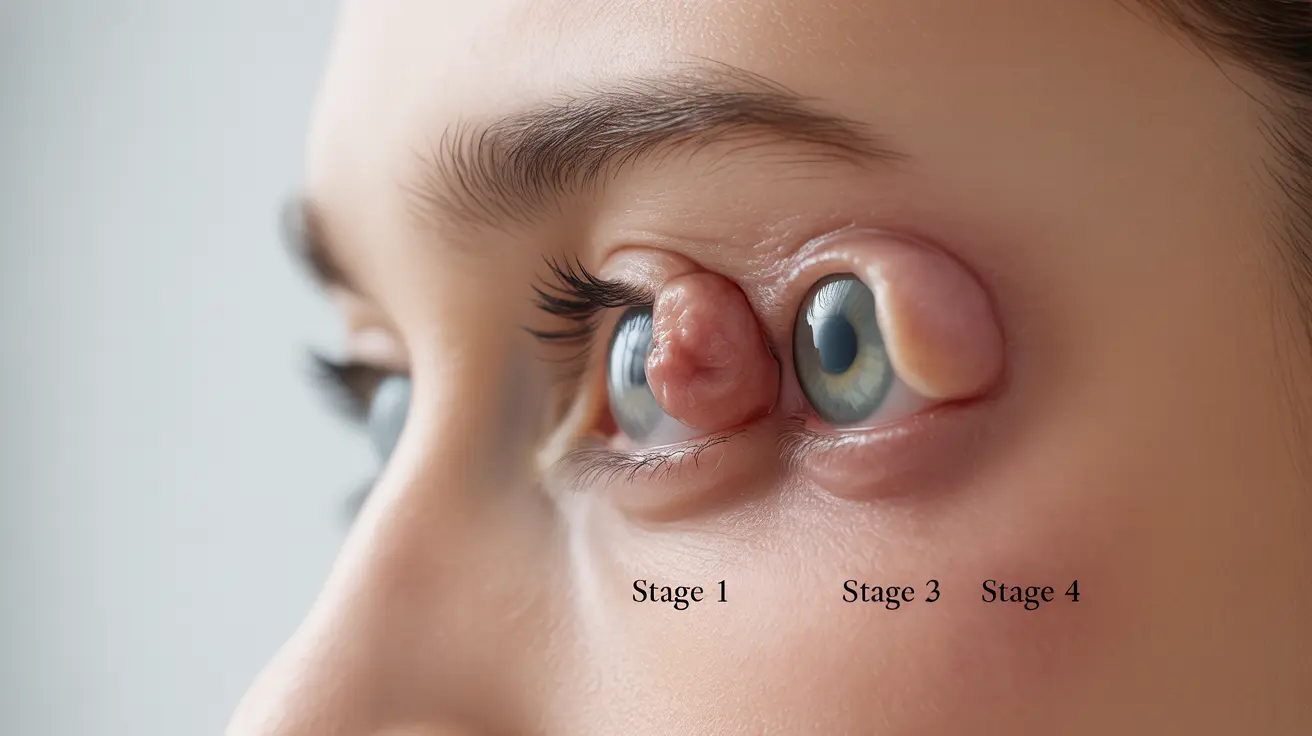A chalazion, a common eyelid condition characterized by a painless bump, progresses through distinct healing stages that can span several weeks or months. Understanding these stages and proper treatment approaches is crucial for optimal recovery and preventing complications. This comprehensive guide will walk you through the chalazion healing journey and provide evidence-based management strategies.
Initial Development Stage
The first stage of chalazion progression typically begins with mild inflammation of a meibomian gland in your eyelid. During this phase, you might notice slight redness and swelling, often accompanied by a small, firm lump beginning to form. This initial stage usually lasts 3-7 days, during which early intervention can significantly impact the healing process.
Active Growth Phase
During the active growth phase, the chalazion becomes more pronounced as inflammation continues. The bump typically grows larger and becomes more defined, though it usually remains painless unlike a stye. This stage can last 1-2 weeks, and proper treatment during this time is crucial for preventing the chalazion from becoming chronic.
Key Characteristics of Active Growth
- Increasing size of the bump
- Firmer consistency
- Visible swelling on the eyelid
- Possible mild discomfort when blinking
Maturation and Resolution Phase
As the chalazion enters its maturation phase, it will either begin to resolve naturally or persist as a chronic bump. During successful healing, you may notice:
- Gradual decrease in size
- Reduced swelling
- Softening of the bump
- Improved eyelid appearance
Treatment Approaches for Different Stages
Conservative Management
Early intervention with conservative treatments often yields the best results. Key treatment approaches include:
- Warm compresses (10-15 minutes, 4 times daily)
- Gentle eyelid massage
- Maintaining proper eyelid hygiene
- Over-the-counter eye drops if recommended by a healthcare provider
Advanced Treatment Options
For persistent chalazia that don't respond to conservative treatment, medical intervention may be necessary. This might include:
- Steroid injections
- Surgical excision
- Antibiotics (if secondary infection develops)
Monitoring Healing Progress
Tracking your chalazion's progression is essential for determining whether treatment is effective. Positive healing signs include reduced swelling, decreased size, and improved eyelid mobility. However, if you notice increased pain, redness, or vision changes, seek immediate medical attention.
Frequently Asked Questions
What are the typical stages of chalazion progression and how long does each stage last?
Chalazion progression typically involves three main stages: initial development (3-7 days), active growth (1-2 weeks), and maturation/resolution (2-8 weeks). The entire healing process can take anywhere from a few weeks to several months, depending on the size and individual healing factors.
How can I treat a chalazion at home to promote healing and prevent it from worsening?
Apply warm compresses 4 times daily for 10-15 minutes, perform gentle eyelid massage after compress application, maintain good eyelid hygiene, and avoid touching your eyes with unwashed hands. These measures help promote drainage and reduce inflammation.
When should I consider surgical removal for a chalazion instead of continuing home care?
Consider surgical removal if the chalazion persists for more than 2-3 months despite consistent home treatment, interferes with vision, becomes unusually large, or causes significant cosmetic concerns. Always consult an eye care professional before pursuing surgical options.
What signs indicate that my chalazion is healing or getting worse?
Healing signs include decreased size, reduced swelling, and improved eyelid mobility. Warning signs of worsening include increased pain, spreading redness, vision changes, or fever. These symptoms warrant immediate medical attention.
Are there any activities or habits I should avoid while my chalazion is healing?
Avoid eye makeup until healing is complete, don't squeeze or attempt to pop the chalazion, limit contact lens wear if uncomfortable, and avoid touching your eyes with unwashed hands. Also, protect your eyes from irritants and excessive sun exposure.




